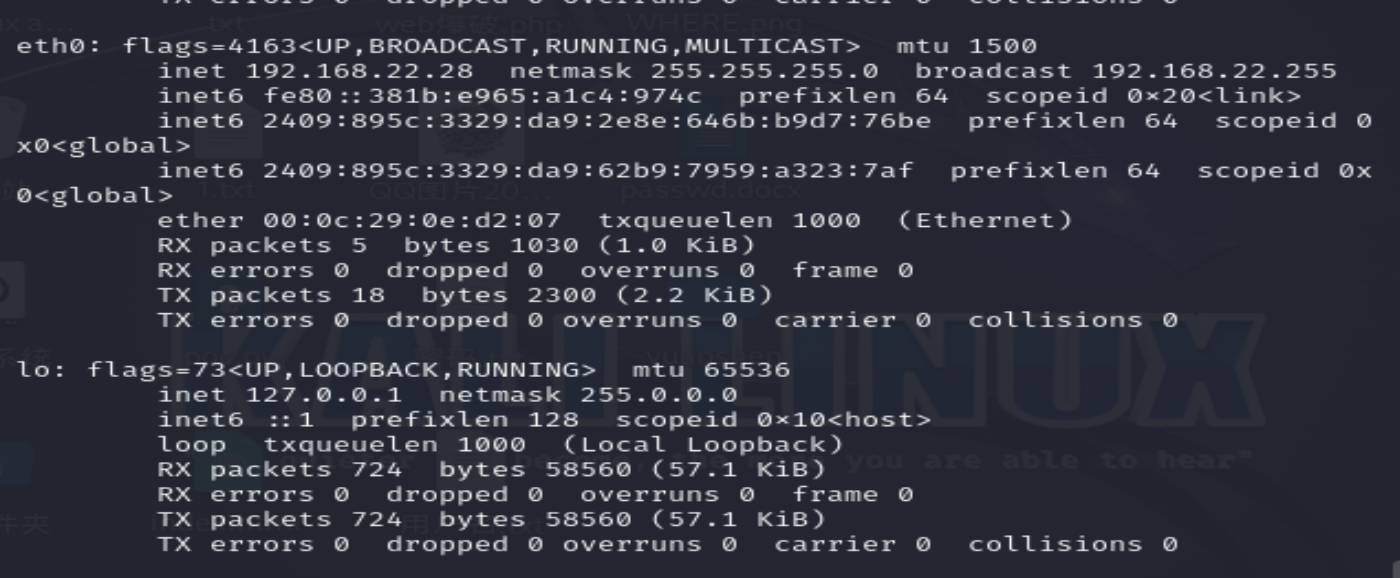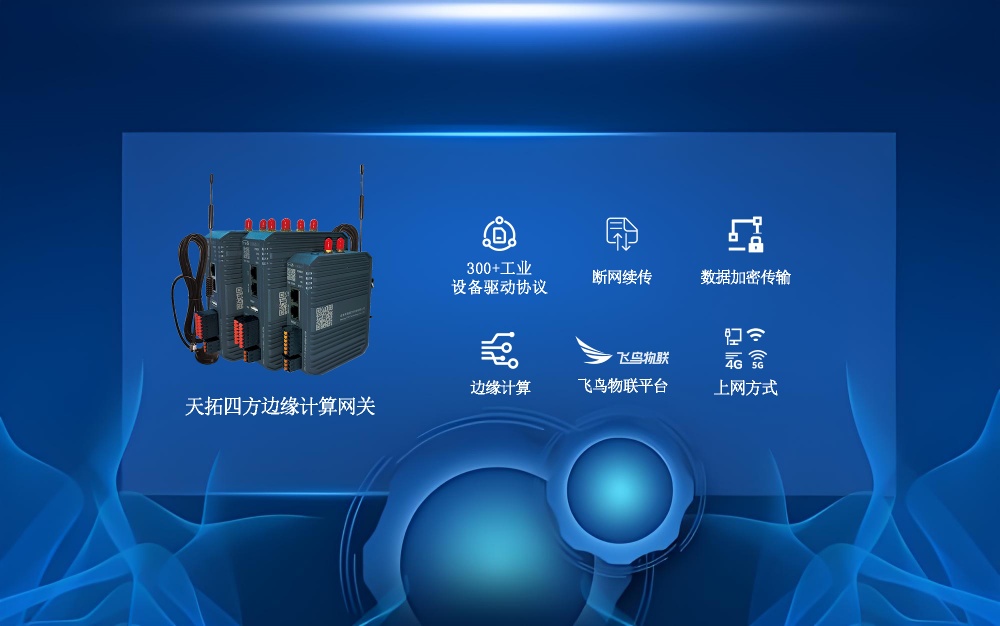一、本文介绍
本文记录的是基于GAM注意力模块的YOLOv10目标检测改进方法研究。GAM注意力模块通过3D排列和重新设计的子模块,能够在通道和空间方面保留信息,避免了先前方法中由于信息减少和维度分离而导致的全局空间-通道交互丢失的问题。本文利用GAM改进YOLOv10,以增强模型的跨维度交互能力。
文章目录
- 一、本文介绍
- 二、GAM注意力原理
- 2.1、设计原理
- 2.2、优势
- 三、GAM的实现代码
- 四、添加步骤
- 4.1 改进点1
- 4.2 改进点2⭐
- 五、添加步骤
- 5.1 修改ultralytics/nn/modules/block.py
- 5.2 修改ultralytics/nn/modules/__init__.py
- 5.3 修改ultralytics/nn/modules/tasks.py
- 六、yaml模型文件
- 6.1 模型改进版本一
- 6.2 模型改进版本二⭐
- 七、成功运行结果
二、GAM注意力原理
全局注意力机制: 保留信息以增强通道与空间的相互作用
GAM(Global Attention Mechanism)是一种全局注意力机制,其设计目的是减少信息减少并放大全局维度交互特征,以增强深度神经网络的性能。
2.1、设计原理
- 整体结构:采用了来自CBAM的顺序通道 - 空间注意力机制,并重新设计了子模块。给定输入特征图
F
1
∈
R
C
×
H
×
W
F_{1} \in \mathbb{R}^{C ×H ×W}
F1∈RC×H×W,中间状态
F
2
F_{2}
F2和输出
F
3
F_{3}
F3的定义为:
- F 2 = M c ( F 1 ) ⊗ F 1 F_{2}=M_{c}\left(F_{1}\right) \otimes F_{1} F2=Mc(F1)⊗F1
-
F
3
=
M
s
(
F
2
)
⊗
F
2
F_{3}=M_{s}\left(F_{2}\right) \otimes F_{2}
F3=Ms(F2)⊗F2
其中 M c M_{c} Mc和 M s M_{s} Ms分别是通道和空间注意力图, ⊗ \otimes ⊗表示元素级乘法。
- 通道注意力子模块:使用3D排列来保留跨三个维度的信息,然后通过两层
MLP(多层感知机)放大跨维度的通道 - 空间依赖性。(MLP是具有压缩比 r r r的编码器 - 解码器结构,与BAM相同。) - 空间注意力子模块:为了关注空间信息,使用两个卷积层进行空间信息融合,并使用与通道注意力子模块相同的压缩比 r r r(与BAM相同)。同时,由于最大池化会减少信息并产生负面影响,所以移除了池化以进一步保留特征图。为了防止参数显著增加,在ResNet50中采用了具有通道打乱的组卷积。



2.2、优势
- 保留信息:通过3D排列和重新设计的子模块,
GAM能够在通道和空间方面保留信息,避免了先前方法中由于信息减少和维度分离而导致的全局空间 - 通道交互的丢失。 - 放大交互:能够放大“全局”跨维度交互,捕获所有三个维度(通道、空间宽度和空间高度)上的重要特征,从而增强了跨维度的交互能力。
- 性能提升:在CIFAR - 100和ImageNet - 1K数据集上的评估表明,
GAM稳定地优于其他几种近期的注意力机制,无论是在ResNet还是轻量级MobileNet上,都能提高性能。例如,在ImageNet - 1K数据集上,对于ResNet18,GAM以更少的参数和更高的效率优于ABN。
论文:https://arxiv.org/pdf/2112.05561v1
源码:https://github.com/dengbuqi/GAM_Pytorch/blob/main/CAM.py
三、GAM的实现代码
GAM模块的实现代码如下:
class GAMAttention(nn.Module):
def __init__(self, c1, c2, group=True, rate=4):
super(GAMAttention, self).__init__()
self.channel_attention = nn.Sequential(
nn.Linear(c1, int(c1 / rate)),
nn.ReLU(inplace=True),
nn.Linear(int(c1 / rate), c1),
)
self.spatial_attention = nn.Sequential(
(
nn.Conv2d(c1, c1 // rate, kernel_size=7, padding=3, groups=rate)
if group
else nn.Conv2d(c1, int(c1 / rate), kernel_size=7, padding=3)
),
nn.BatchNorm2d(int(c1 / rate)),
nn.ReLU(inplace=True),
(
nn.Conv2d(c1 // rate, c2, kernel_size=7, padding=3, groups=rate)
if group
else nn.Conv2d(int(c1 / rate), c2, kernel_size=7, padding=3)
),
nn.BatchNorm2d(c2),
)
def forward(self, x):
b, c, h, w = x.shape
x_permute = x.permute(0, 2, 3, 1).view(b, -1, c)
x_att_permute = self.channel_attention(x_permute).view(b, h, w, c)
x_channel_att = x_att_permute.permute(0, 3, 1, 2)
x = x * x_channel_att
x_spatial_att = self.spatial_attention(x).sigmoid()
x_spatial_att = channel_shuffle(x_spatial_att, 4) # last shuffle
out = x * x_spatial_att
return out
def channel_shuffle(x, groups=2): ##shuffle channel
# RESHAPE----->transpose------->Flatten
B, C, H, W = x.size()
out = x.view(B, groups, C // groups, H, W).permute(0, 2, 1, 3, 4).contiguous()
out = out.view(B, C, H, W)
return out
四、添加步骤
4.1 改进点1
模块改进方法1️⃣:直接加入GAMAttention模块。
GAMAttention模块添加后如下:

注意❗:在5.2和5.3小节中需要声明的模块名称为:GAMAttention。
4.2 改进点2⭐
模块改进方法2️⃣:基于GAMAttention模块的C2f。
相较方法一中的直接插入注意力模块,利用注意力模块对卷积等其他模块进行改进,其新颖程度会更高一些,训练精度可能会表现的更高。
第二种改进方法是对YOLOv10中的C2f模块进行改进。GAM 模块能够捕捉通道、空间宽度和空间高度等多个维度的重要特征,加强了跨维度的交互,在将其添加到C2f模块中有助于在分流过程中更好地分配注意力,减少无关信息的干扰,提高特征质量。
改进代码如下:
class C2f_GAM(nn.Module):
"""Faster Implementation of CSP Bottleneck with 2 convolutions."""
def __init__(self, c1, c2, n=1, shortcut=False, g=1, e=0.5):
"""Initialize CSP bottleneck layer with two convolutions with arguments ch_in, ch_out, number, shortcut, groups,
expansion.
"""
super().__init__()
self.c = int(c2 * e) # hidden channels
self.cv1 = Conv(c1, 2 * self.c, 1, 1)
self.cv2 = Conv((2 + n) * self.c, c2, 1) # optional act=FReLU(c2)
self.m = nn.ModuleList(Bottleneck(self.c, self.c, shortcut, g, k=((3, 3), (3, 3)), e=1.0) for _ in range(n))
self.att = GAMAttention(c1, c2)
def forward(self, x):
"""Forward pass through C2f layer."""
y = list(self.cv1(x).chunk(2, 1))
y.extend(m(y[-1]) for m in self.m)
return self.att(self.cv2(torch.cat(y, 1)))
def forward_split(self, x):
"""Forward pass using split() instead of chunk()."""
y = list(self.cv1(x).split((self.c, self.c), 1))
y.extend(m(y[-1]) for m in self.m)
return self.att(self.cv2(torch.cat(y, 1)))

注意❗:在5.2和5.3小节中需要声明的模块名称为:C2f_GAM。
五、添加步骤
5.1 修改ultralytics/nn/modules/block.py
此处需要修改的文件是ultralytics/nn/modules/block.py
block.py中定义了网络结构的通用模块,我们想要加入新的模块就只需要将模块代码放到这个文件内即可。
将GAMAttention和C2f_GAM模块代码添加到此文件下。
5.2 修改ultralytics/nn/modules/init.py
此处需要修改的文件是ultralytics/nn/modules/__init__.py
__init__.py文件中定义了所有模块的初始化,我们只需要将block.py中的新的模块命添加到对应的函数即可。
GAMAttention和C2f_GAM在block.py中实现,所有要添加在from .block import:
from .block import (
C1,
C2,
...
GAMAttention,
C2f_GAM
)

5.3 修改ultralytics/nn/modules/tasks.py
在tasks.py文件中,需要在两处位置添加各模块类名称。
首先:在函数声明中引入GAMAttention和C2f_GAM


其次:在parse_model函数中注册GAMAttention和C2f_GAM模块


六、yaml模型文件
6.1 模型改进版本一
在代码配置完成后,配置模型的YAML文件。
此处以ultralytics/cfg/models/v10/yolov10m.yaml为例,在同目录下创建一个用于自己数据集训练的模型文件yolov10m-GAM.yaml。
将yolov10m.yaml中的内容复制到yolov10m-GAM.yaml文件下,修改nc数量等于自己数据中目标的数量。
在骨干网络中添加GAMAttention模块,即下方代码中的第45行,只需要填入一个参数,通道数,和前一层通道数一致。
📌 GAM 模块能够放大全局维度交互特征,放在此处的目的是有助于更好地捕捉和保留重要的信息,从而增强骨干网络对特征的提取能力。
# Ultralytics YOLO 🚀, AGPL-3.0 license
# YOLOv8 object detection model with P3-P5 outputs. For Usage examples see https://docs.ultralytics.com/tasks/detect
# Parameters
nc: 1 # number of classes
scales: # model compound scaling constants, i.e. 'model=yolov8n.yaml' will call yolov8.yaml with scale 'n'
# [depth, width, max_channels]
m: [0.67, 0.75, 768] # YOLOv8m summary: 295 layers, 25902640 parameters, 25902624 gradients, 79.3 GFLOPs
# YOLOv8.0n backbone
backbone:
# [from, repeats, module, args]
- [-1, 1, Conv, [64, 3, 2]] # 0-P1/2
- [-1, 1, Conv, [128, 3, 2]] # 1-P2/4
- [-1, 3, C2f, [128, True]]
- [-1, 1, Conv, [256, 3, 2]] # 3-P3/8
- [-1, 6, C2f, [256, True]]
- [-1, 1, SCDown, [512, 3, 2]] # 5-P4/16
- [-1, 6, C2f, [512, True]]
- [-1, 1, SCDown, [1024, 3, 2]] # 7-P5/32
- [-1, 3, C2fCIB, [1024, True]]
- [-1, 1, GAMAttention, [1024]]
- [-1, 1, SPPF, [1024, 5]] # 10
- [-1, 1, PSA, [1024]] # 11
# YOLOv8.0n head
head:
- [-1, 1, nn.Upsample, [None, 2, "nearest"]]
- [[-1, 6], 1, Concat, [1]] # cat backbone P4
- [-1, 3, C2f, [512]] # 14
- [-1, 1, nn.Upsample, [None, 2, "nearest"]]
- [[-1, 4], 1, Concat, [1]] # cat backbone P3
- [-1, 3, C2f, [256]] # 17 (P3/8-small)
- [-1, 1, Conv, [256, 3, 2]]
- [[-1, 14], 1, Concat, [1]] # cat head P4
- [-1, 3, C2fCIB, [512, True]] # 20 (P4/16-medium)
- [-1, 1, SCDown, [512, 3, 2]]
- [[-1, 11], 1, Concat, [1]] # cat head P5
- [-1, 3, C2fCIB, [1024, True]] # 23 (P5/32-large)
- [[17, 20, 23], 1, v10Detect, [nc]] # Detect(P3, P4, P5)
6.2 模型改进版本二⭐
此处同样以ultralytics/cfg/models/v10/yolov10m.yaml为例,在同目录下创建一个用于自己数据集训练的模型文件yolov10m-C2f_GAM.yaml。
将yolov10m.yaml中的内容复制到yolov10m-C2f_GAM.yaml文件下,修改nc数量等于自己数据中目标的数量。
📌 模型的修改方法是将骨干网络中的所有C2f模块替换成C2f_GAM模块。
# Ultralytics YOLO 🚀, AGPL-3.0 license
# YOLOv8 object detection model with P3-P5 outputs. For Usage examples see https://docs.ultralytics.com/tasks/detect
# Parameters
nc: 1 # number of classes
scales: # model compound scaling constants, i.e. 'model=yolov8n.yaml' will call yolov8.yaml with scale 'n'
# [depth, width, max_channels]
m: [0.67, 0.75, 768] # YOLOv8m summary: 295 layers, 25902640 parameters, 25902624 gradients, 79.3 GFLOPs
# YOLOv8.0n backbone
backbone:
# [from, repeats, module, args]
- [-1, 1, Conv, [64, 3, 2]] # 0-P1/2
- [-1, 1, Conv, [128, 3, 2]] # 1-P2/4
- [-1, 3, C2f_GAM, [128, True]]
- [-1, 1, Conv, [256, 3, 2]] # 3-P3/8
- [-1, 6, C2f_GAM, [256, True]]
- [-1, 1, SCDown, [512, 3, 2]] # 5-P4/16
- [-1, 6, C2f_GAM, [512, True]]
- [-1, 1, SCDown, [1024, 3, 2]] # 7-P5/32
- [-1, 3, C2fCIB, [1024, True]]
- [-1, 1, SPPF, [1024, 5]] # 9
- [-1, 1, PSA, [1024]] # 10
# YOLOv8.0n head
head:
- [-1, 1, nn.Upsample, [None, 2, "nearest"]]
- [[-1, 6], 1, Concat, [1]] # cat backbone P4
- [-1, 3, C2f, [512]] # 13
- [-1, 1, nn.Upsample, [None, 2, "nearest"]]
- [[-1, 4], 1, Concat, [1]] # cat backbone P3
- [-1, 3, C2f, [256]] # 16 (P3/8-small)
- [-1, 1, Conv, [256, 3, 2]]
- [[-1, 13], 1, Concat, [1]] # cat head P4
- [-1, 3, C2fCIB, [512, True]] # 19 (P4/16-medium)
- [-1, 1, SCDown, [512, 3, 2]]
- [[-1, 10], 1, Concat, [1]] # cat head P5
- [-1, 3, C2fCIB, [1024, True]] # 22 (P5/32-large)
- [[16, 19, 22], 1, v10Detect, [nc]] # Detect(P3, P4, P5)
七、成功运行结果
分别打印网络模型可以看到GAMAttention和C2f_GAM已经加入到模型中,并可以进行训练了。
YOLOv10m-GAM:
from n params module arguments
0 -1 1 1392 ultralytics.nn.modules.conv.Conv [3, 48, 3, 2]
1 -1 1 41664 ultralytics.nn.modules.conv.Conv [48, 96, 3, 2]
2 -1 2 111360 ultralytics.nn.modules.block.C2f [96, 96, 2, True]
3 -1 1 166272 ultralytics.nn.modules.conv.Conv [96, 192, 3, 2]
4 -1 4 813312 ultralytics.nn.modules.block.C2f [192, 192, 4, True]
5 -1 1 78720 ultralytics.nn.modules.block.SCDown [192, 384, 3, 2]
6 -1 4 3248640 ultralytics.nn.modules.block.C2f [384, 384, 4, True]
7 -1 1 228672 ultralytics.nn.modules.block.SCDown [384, 576, 3, 2]
8 -1 2 1689984 ultralytics.nn.modules.block.C2fCIB [576, 576, 2, True]
9 -1 1 2200896 ultralytics.nn.modules.block.GAMAttention [576, 576]
10 -1 1 831168 ultralytics.nn.modules.block.SPPF [576, 576, 5]
11 -1 1 1253088 ultralytics.nn.modules.block.PSA [576, 576]
12 -1 1 0 torch.nn.modules.upsampling.Upsample [None, 2, 'nearest']
13 [-1, 6] 1 0 ultralytics.nn.modules.conv.Concat [1]
14 -1 2 1993728 ultralytics.nn.modules.block.C2f [960, 384, 2]
15 -1 1 0 torch.nn.modules.upsampling.Upsample [None, 2, 'nearest']
16 [-1, 4] 1 0 ultralytics.nn.modules.conv.Concat [1]
17 -1 2 517632 ultralytics.nn.modules.block.C2f [576, 192, 2]
18 -1 1 332160 ultralytics.nn.modules.conv.Conv [192, 192, 3, 2]
19 [-1, 14] 1 0 ultralytics.nn.modules.conv.Concat [1]
20 -1 2 831744 ultralytics.nn.modules.block.C2fCIB [576, 384, 2, True]
21 -1 1 152448 ultralytics.nn.modules.block.SCDown [384, 384, 3, 2]
22 [-1, 11] 1 0 ultralytics.nn.modules.conv.Concat [1]
23 -1 2 1911168 ultralytics.nn.modules.block.C2fCIB [960, 576, 2, True]
24 [17, 20, 23] 1 2282134 ultralytics.nn.modules.head.v10Detect [1, [192, 384, 576]]
YOLOv10m-GAM summary: 509 layers, 18686182 parameters, 18686166 gradients, 65.7 GFLOPs
YOLOv10m-C2f_GAM:
from n params module arguments
0 -1 1 1392 ultralytics.nn.modules.conv.Conv [3, 48, 3, 2]
1 -1 1 41664 ultralytics.nn.modules.conv.Conv [48, 96, 3, 2]
2 -1 2 253248 ultralytics.nn.modules.block.C2f_GAM [96, 96, True]
3 -1 1 166272 ultralytics.nn.modules.conv.Conv [96, 192, 3, 2]
4 -1 4 2017536 ultralytics.nn.modules.block.C2f_GAM [192, 192, True]
5 -1 1 78720 ultralytics.nn.modules.block.SCDown [192, 384, 3, 2]
6 -1 4 8053248 ultralytics.nn.modules.block.C2f_GAM [384, 384, True]
7 -1 1 228672 ultralytics.nn.modules.block.SCDown [384, 576, 3, 2]
8 -1 2 1689984 ultralytics.nn.modules.block.C2fCIB [576, 576, 2, True]
9 -1 1 831168 ultralytics.nn.modules.block.SPPF [576, 576, 5]
10 -1 1 1253088 ultralytics.nn.modules.block.PSA [576, 576]
11 -1 1 0 torch.nn.modules.upsampling.Upsample [None, 2, 'nearest']
12 [-1, 6] 1 0 ultralytics.nn.modules.conv.Concat [1]
13 -1 2 1993728 ultralytics.nn.modules.block.C2f [960, 384, 2]
14 -1 1 0 torch.nn.modules.upsampling.Upsample [None, 2, 'nearest']
15 [-1, 4] 1 0 ultralytics.nn.modules.conv.Concat [1]
16 -1 2 517632 ultralytics.nn.modules.block.C2f [576, 192, 2]
17 -1 1 332160 ultralytics.nn.modules.conv.Conv [192, 192, 3, 2]
18 [-1, 13] 1 0 ultralytics.nn.modules.conv.Concat [1]
19 -1 2 831744 ultralytics.nn.modules.block.C2fCIB [576, 384, 2, True]
20 -1 1 152448 ultralytics.nn.modules.block.SCDown [384, 384, 3, 2]
21 [-1, 10] 1 0 ultralytics.nn.modules.conv.Concat [1]
22 -1 2 1911168 ultralytics.nn.modules.block.C2fCIB [960, 576, 2, True]
23 [16, 19, 22] 1 2282134 ultralytics.nn.modules.head.v10Detect [1, [192, 384, 576]]
YOLOv10m-C2f_GAM summary: 667 layers, 22636006 parameters, 22635990 gradients, 102.1 GFLOPs



















